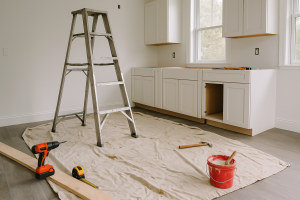Understanding Insured Mortgages in Canada: A Comprehensive Guide for First-Time Homebuyers
Introduction
Buying a home is an exciting milestone. However, understanding the complexities of mortgages, especially for first-time homebuyers, can be challenging. A common term you’ll encounter is “insured mortgage.” In this guide, we’ll explain what this means and how it impacts your homebuying journey.
What is an Insured Mortgage?
In Canada, an insured mortgage is a home loan that includes mortgage insurance. This insurance protects the lender if the borrower defaults on the loan.
Why is Mortgage Insurance Necessary?
Mortgage insurance is required by the Canadian government for down payments less than 20% of the home’s purchase price. Providers include the Canada Mortgage and Housing Corporation (CMHC), Sagen (formerly Genworth Canada), and Canada Guaranty.
External Links:
How Does an Insured Mortgage Work?
- Mortgage Issuance: When you decide to purchase a home and need financial assistance, you approach a bank or lending institution to obtain a mortgage. This mortgage is essentially a loan to cover the cost of the home.
- Insurance Requirement: If your down payment is less than 20% of the home’s purchase price, the Canadian government requires you to obtain mortgage insurance. This insurance is typically provided by organizations such as the Canada Mortgage and Housing Corporation (CMHC), Genworth Canada, or Canada Guaranty. The purpose is to protect the lender in case you, the borrower, are unable to fulfill your mortgage obligations.
- Premium Payments: As the borrower, you are responsible for paying a premium for the mortgage insurance. This premium can be a one-time upfront payment or added to your regular mortgage payments, depending on the arrangement you make with your lender.
- Lender Protection: If, at any point, you find yourself unable to make your mortgage payments and default on the loan, the mortgage insurance comes into play. In the event of default, the insurance provides a financial safety net for the lender. It helps cover a portion of the outstanding mortgage balance and any associated costs incurred by the lender due to the default.
- Claims Process: When a borrower defaults, the lender initiates a claims process with the mortgage insurance provider. The provider assesses the claim, determining the extent of the financial loss incurred by the lender. The insurance payout then helps compensate the lender for the specified amount, mitigating their losses in the unfortunate event of borrower default.
Understanding this detailed process is crucial for borrowers, as it highlights the importance of fulfilling mortgage obligations to avoid financial repercussions for both the borrower and the lender. It’s a system that encourages responsible borrowing while providing a safety net for unforeseen circumstances.
Benefits for Homebuyers
While the primary purpose of mortgage insurance is to protect lenders, it also benefits homebuyers by allowing qualification for mortgages with down payments of less than 20%. This can significantly reduce the initial financial barriers of purchasing a home for homebuyers with limited savings.
Costs of Mortgage Insurance
It’s crucial for homebuyers to be aware that mortgage insurance comes with additional costs. Here are some of the key factors:
Insurance premium
Mortgage insurance is calculated based on a percentage of the loan amount and is determined by the size of the down payment. The premium is usually paid by the borrower and can be a one-time upfront payment or added to the mortgage payments. The specific rate depends on the loan-to-value ratio, which is the loan amount divided by the property value. Typically, the smaller the down payment, the higher the mortgage insurance premium.
Taxes
In Quebec, provincial sales tax applies to the mortgage insurance premium, adding an extra financial consideration for homebuyers. This tax is not added to the mortgage and must be paid upfront.
Interest
It is also important to note that when the premium is added to the total mortgage amount (rather than being paid upfront), the borrower must then pay interest on the premium. Since both the principal and the premium are rolled into the total mortgage amount, interest is accrued on this combined sum, which effectively increases the overall cost of borrowing.
Learn more here: Mortgage Loan Insurance and Premiums | CMHC
Mortgage Loan Insurance vs. Mortgage Protection Insurance
As we’ve illustrated, mortgage loan insurance protects the lender if you face challenges repaying the mortgage and is mandatory if your downpayment is under 20%. Mortgage protection insurance, on the other hand, is a separate and optional insurance that a borrower may choose to purchase. It is designed to protect the borrower and their family by covering the mortgage in specific circumstances such as death, disability, or job loss. While both types of insurance involve protection in the context of a mortgage, the term “insured mortgage” more commonly denotes mortgage loan insurance in the financial and real estate contexts.
Conclusion
Understanding the ins and outs of insured mortgages is key for a smooth homebuying journey. For Canadian residents, this means being aware of the mortgage insurance requirements and how they impact your financial obligations. While it adds an extra layer of cost, it can be a valuable tool for achieving the dream of homeownership, even with a smaller down payment.
If you’re considering buying a home, take the time to explore your mortgage options and consult with professionals who can guide you through the process. With the right knowledge, you can confidently step into the world of homeownership and make informed decisions about your mortgage.
Happy house hunting!
Wondering about your insurance premium? Check out the CMHC mortgage calculator for an estimate.
Want to talk to an expert? Consult our directory of mortgage specialists.



